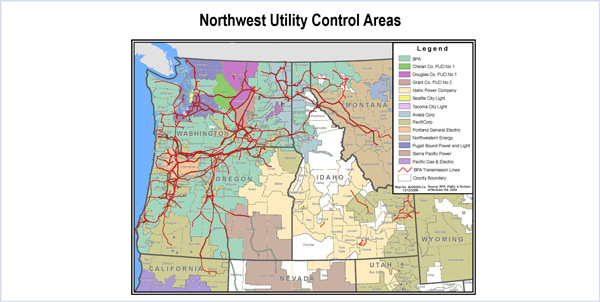By Robert Mullin
CAISO has signed an agreement with the Bonneville Power Administration designed to facilitate Energy Imbalance Market (EIM) transfers in the Pacific Northwest while ensuring that the agency can continue to reliably serve its own transmission customers.
The Coordinated Transmission Agreement (CTA) could provide a model for future joint efforts between the two agencies that operate most of the transmission network along the West Coast, according to Todd Miller, a senior project manager with BPA.
“This agreement kind of seems like a no-brainer,” Miller said during a March 27 call hosted by the EIM Body of State Regulators (BOSR), an informal network of Western utility commissioners that convenes regularly to discuss market issues. “We need to have an operating agreement … so everybody understands the rules of the road.”
The agreement also represents a “milestone” in cooperation between BPA and CAISO, Miller said. “I think it’s really a first step in being able to coordinate seams issues.”
The CTA largely formalizes procedures already put in place before the EIM was launched in November 2014. At the time, BPA worked with PacifiCorp — the EIM’s first member — and the ISO to define practices around exchanging transfer data and setting limits on the use of dynamic transfers on the BPA system.
Since its rollout, the market has expanded farther into the Northwest to include Puget Sound Energy, with Portland General Electric slated to join later this year, followed by Idaho Power in early 2018. All three utilities rely to some extent on BPA, which controls about 70% of the transmission in the region.
“Some of [the original practices were] captured in operating procedures, but until the CTA, there was no contractual obligations regarding these requirements,” BPA said.
The agreement spells out an obligation for both parties to share transmission system data: CAISO must share total market dispatch for EIM resources during a market interval and load forecasts for EIM balancing authority areas, while BPA must convey real-time managed limits and actual flows on its facilities. The agreement clarifies the processes by which that data will be made available, including frequency and granularity.
“It also includes a confidentiality provision,” Miller said. “Everybody is doing what they’re supposed to be doing, but now there’s something in the contract that makes the lawyers feel better about things.”
The agreement also codifies BPA’s right to place limits on the upward and downward rate of change in usage that EIM dynamic transfers would impose on its transmission network — making explicit an already existing practice.
“Bonneville will set the upper rate of change limit and lower rate of change limit at its discretion and notify the CAISO of such limits for each Bonneville-managed facility before each market interval,” the agreement states.
The agreement gives BPA the ability to manage system operating limits on its paths at its own discretion, but requires it to alert the ISO to any changes ahead of an interval.
It also provides for the development of “flow-relief tools” related to the EIM. Among those tools: a procedure that, in a curtailment situation, will allow BPA to transmit to CAISO the EIM’s prorated share of curtailed flows on an affected transmission flowgate between the two balancing areas.
New Groups
The CTA additionally calls for CAISO and BPA to convene a Coordinating Committee every quarter to address operational issues related to the agreement, resolve disputes and offer up potential revisions.
The agreement also establishes a working group — consisting of Pacific Northwest EIM members, a select group of BPA transmission customers and the Coordinating Committee — charged with discussing implementation, data exchange and transmission operations under the agreement.
“As far as the selected Bonneville customers, we haven’t decided how we’re going to do that yet, but we want to select customers that are representative of our various classes of transmission customers,” Miller said.
Ann Rendahl, a Washington Utilities and Transportation commissioner and chair of the BOSR, noted that the “whereas” clause at the beginning of the CTA specifies that the Coordinating Committee will discuss seams issues.
“I assume that the working group is also to discuss seams issues, but to get at them from a more granular level,” Rendahl said.
Miller agreed and said the group could also be the body that initiates other “major” types of coordination and constraint relief along the interties.
CAISO and BPA plan to file the agreement with FERC in April. “Hopefully we’ll have another FERC commissioner at some point so it can actually be approved,” Miller said.





